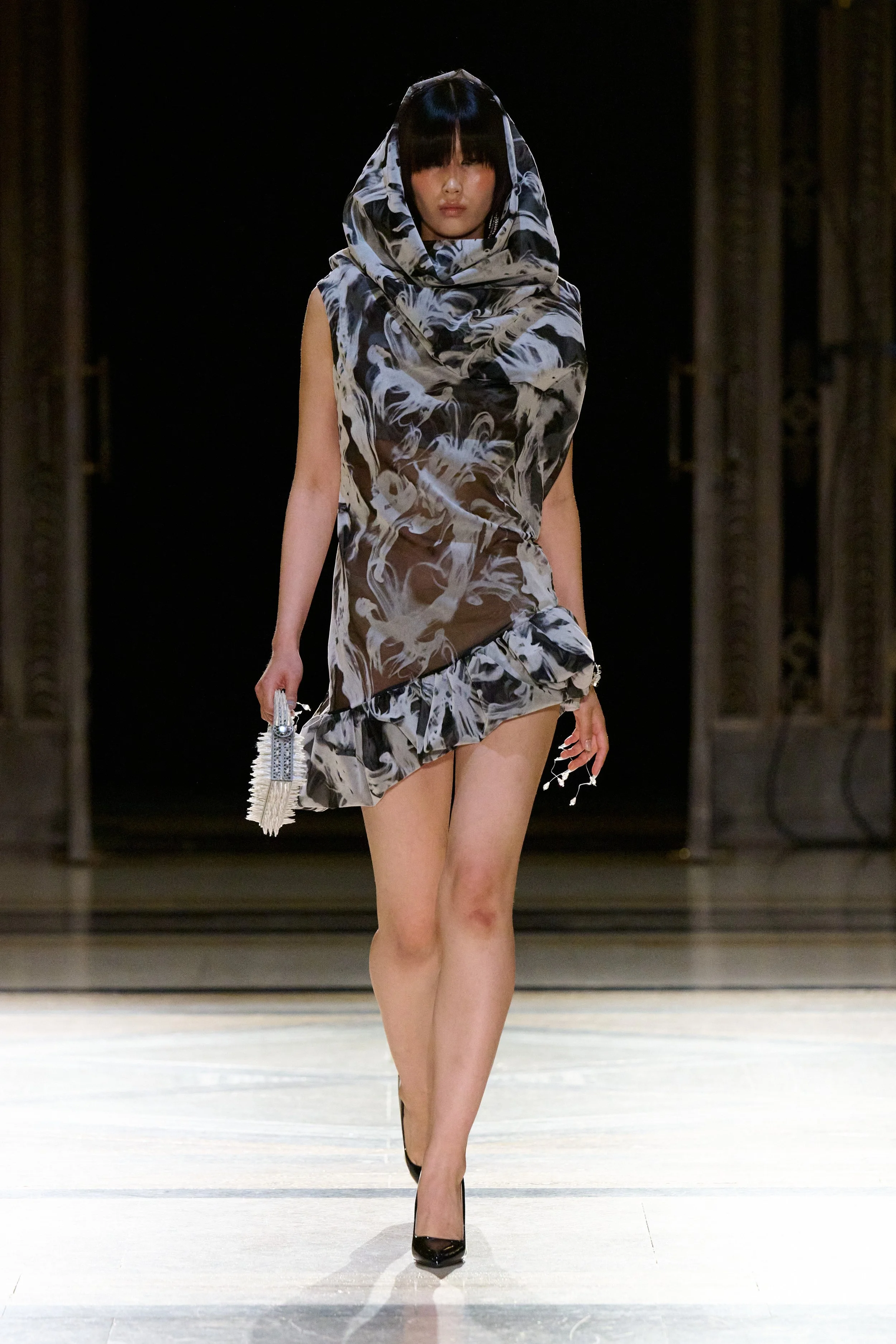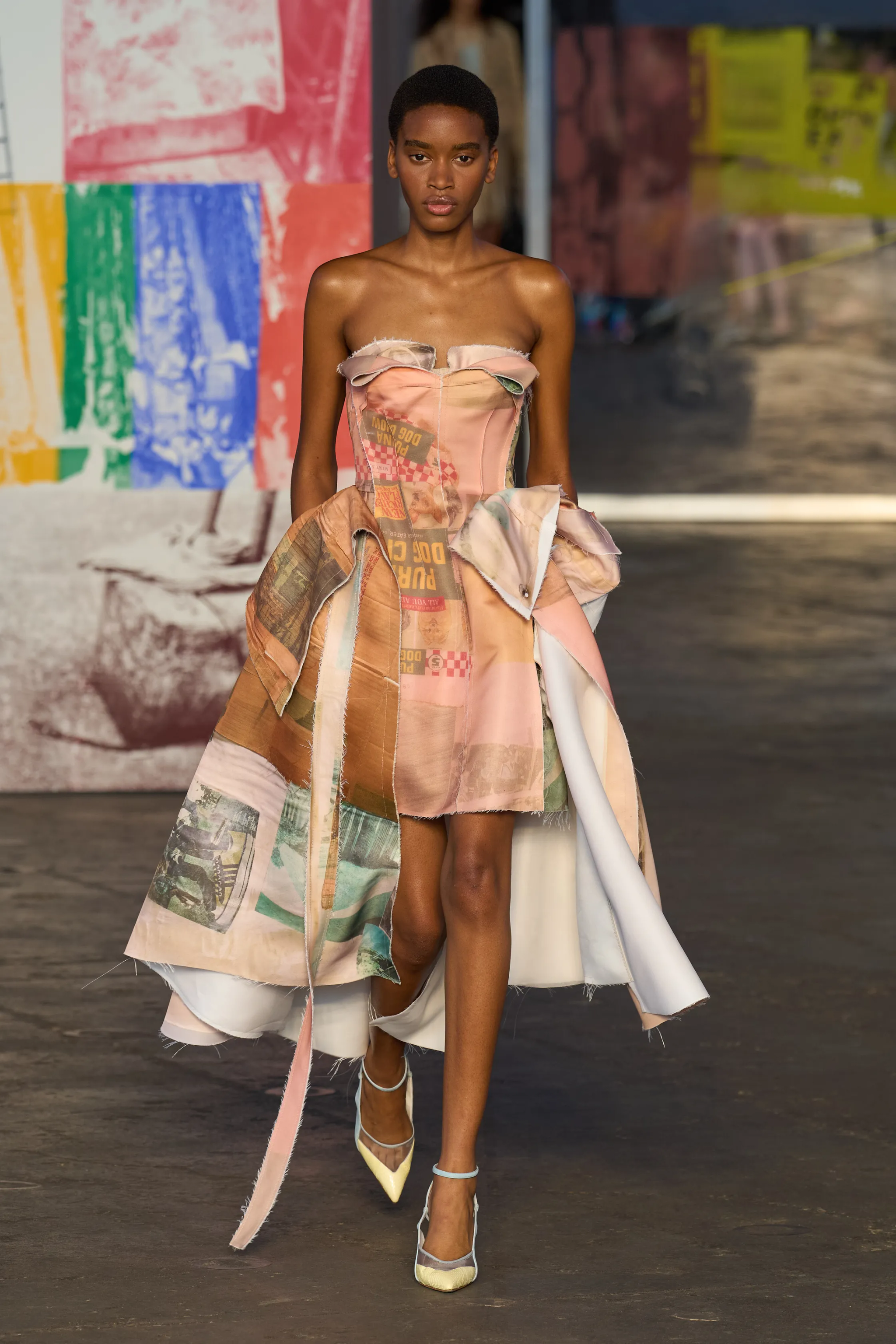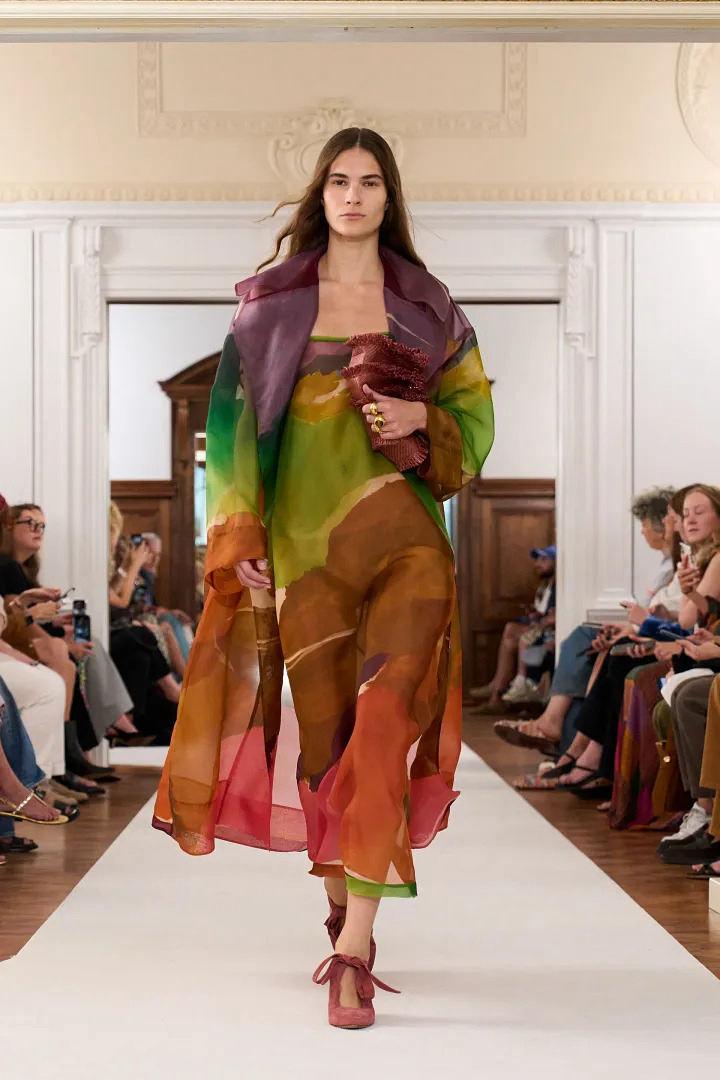The Midnight Sun
Karina Bond SS26
This month, I was front row at London Fashion Week for Karina Bond's latest show ‘The Midnight Sun’. Here’s what you missed 🌞
September has ushered in the back-to-school season, bringing the autumnal bliss of cosy knitwear, golden-brown colour schemes, and of course, the start of the fashion season. I've always enjoyed the parallels between art and fashion, viewing the latter as wearable art. Lately, the connection feels stronger than ever, as the two worlds seamlessly collide on the runway and across the hallowed walls of major art museums.
During New York Fashion Week, Jason Wu unveiled his spring 2026 collection, ‘Collage,’ in partnership with the Robert Rauschenberg Foundation. The line takes inspiration from Rauschenberg's 1970s fabric works, which Wu reimagined through his own materials, such as satin, organza, and silk twill, to echo Rauschenberg's experimental approach to textiles.
Jason Wu SS26 (image via tumblr)
Ulla Johnson SS26 (image via tumblr)
Elsewhere in New York, the Beaux Arts Cooper Hewitt Museum served as the perfect backdrop for Ulla Johnson’s new collection, a collaboration with the Helen Frankenthaler Foundation. Johnson translated the abstract expressionist's practice into a series of ethereal garments, transforming compositions like Western Dream (1957), Moontide (1968), and Nature Abhors a Vacuum (1973). Working primarily with organza and satin-faced silk, she rendered the paintings into dreamy dresses and tailored suits.
In London, I had the joy of attending Karina Bond’s ready-to-wear and couture collection show, ‘The Midnight Sun.’ The Central Saint Martins graduate’s futuristic designs exist somewhere between sculpture and clothing, acting almost as a second skin. The show felt otherworldly, with models emerging in everything from heavily embellished pieces to wispy, sheer garments. With their striking textured surfaces, many of the designs were also very tactile, appealing to senses beyond the visual.
The final piece, dubbed the ‘Desert Rose’ dress, was a couture design inspired by crystalline desert formations. Comprising over 5,000 individually hand-drawn discs, the dress functioned more as a sculptural piece. Up close, every element, from the fabric choice to the finely crafted contours, illustrated how the piece completely transcends traditional ideas of clothing. “It’s a design which would have been impossible to imagine in the past, that no fabric could replicate”, Bond shared. Overall, the collection tapped into the subconscious to explore the concepts of dreaming and reality, presenting visions of fashion reimagined by new technologies.
The Desert Rose Dress, Karina Bond SS26
There’s something exciting about seeing themes, often explored by practicing artists, come to life through a different medium. With fashion comes movement, performance, and spectacle; it offers a dynamic quality that feels distinct from more traditional art forms. The way designers like Wu and Johnson use paintings as a starting point, transforming them into apparel, is truly fascinating. They express the artists’ core ideas through a parallel visual language, allowing a new audience to experience the works of influential figures like Frankenthaler and Rauschenberg. Similarly, Bond blurs the line between art and fashion, creating innovative designs that strongly recall the work of contemporary sculptors.
It seems art is moving closer to fashion and vice versa, with both worlds taking the best parts from each other. As I eagerly await the ‘Schiaparelli: Fashion Becomes Art’ exhibition opening at the V&A next spring, I'll hold onto Andy Warhol's famous words: “Fashion is more art than art is.”
Karina Bond images courtesy of Cellar Communications <3












